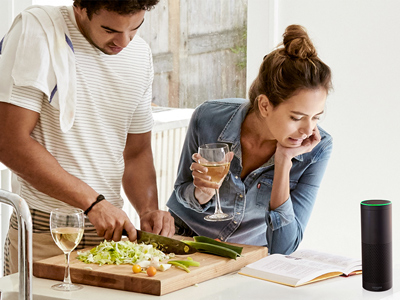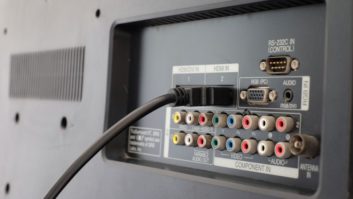
Shopping by voice could play a big role this holiday season, and will likely reach critical mass next year when a quarter of all U.S. online adults are expected to place an order through a smart speaker.
The forecast is from a new v-commerce study by the Consumer Technology Association (CTA), which shows that the likeliest candidates for the new medium are shoppers who already use digital assistants regularly.
Also fueling vocal buying is what CTA described as the “meteoric” rise in smart speaker sales, which grew 44 percent last year in the U.S., to 39.2 million units. Ownership has nearly tripled, the trade group said, with 22 percent of U.S. households now in possession of at least one of the digital-assistant-driven devices.
Related: Everything You Need To Know About Smart Speakers & How Consumers Use Them
“Digital assistants are enabling a fourth ‘voice’ sales channel to emerge, joining brick-and-mortar, online and mobile as an avenue for buying goods and services,” said Ben Arnold, CTA’s senior director of trends and innovation. “Voice shopping is still a nascent practice, but as brands add more commerce-related skills and capabilities to digital assistants, we expect more consumers to experiment with voice shopping. This will play out broadly during the 2018 holiday season.”
So far, food and groceries are the most frequently purchased items by voice, followed by household supplies and consumer electronics, the report showed. That somewhat reflects the locations in which digital assistants are most commonly used: the living room (53 percent); the bedroom (40 percent); and the kitchen (32) percent.
Also making foodstuffs ripe for v-commerce — and kitchen appliances a natural for voice-capability — is their familiarity. According to the study, more than half of consumers would purchase a product or service they’ve either seen or ordered in the past (56 percent), while only 9 percent would be willing to place an order orally for something they’ve never seen online or in-store.
“The kitchen is emerging as the next frontier for automation in the home,” Arnold noted. “As the third-most common room for smart speaker use, combined with food and groceries as a top category for voice purchases, it doesn’t surprise me to see a growing number of voice-enabled small and major appliances. The kitchen is a chore-heavy room in the house, making it a perfect candidate for added efficiency and automation — a place where voice shopping will be especially useful.”
The study, “2018 Voice Shopping Report,” is based on an online survey of 2,000 U.S. adults conducted May 18-25, 2018. It’s available for $999, and offered to CTA members at no charge.













